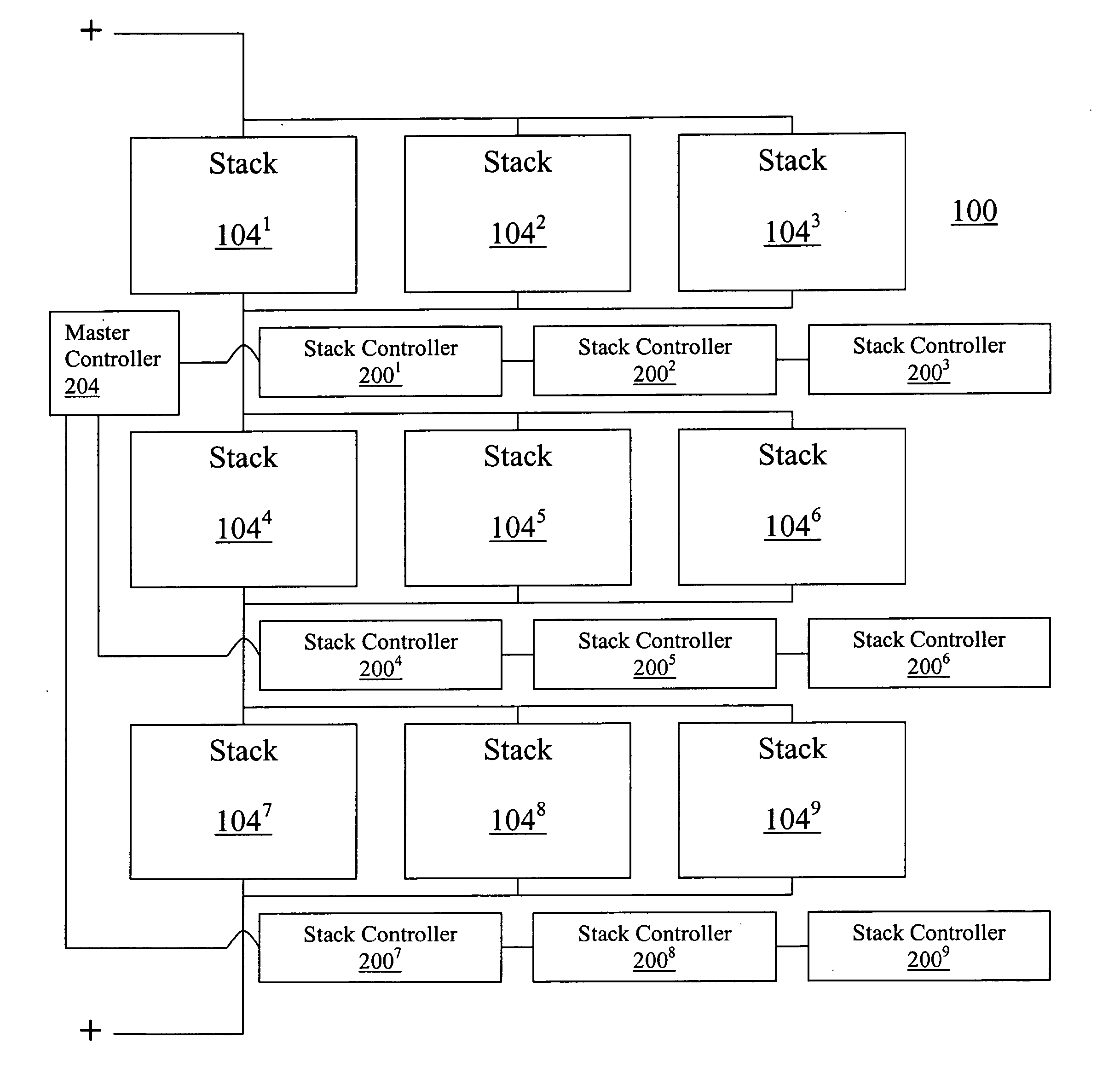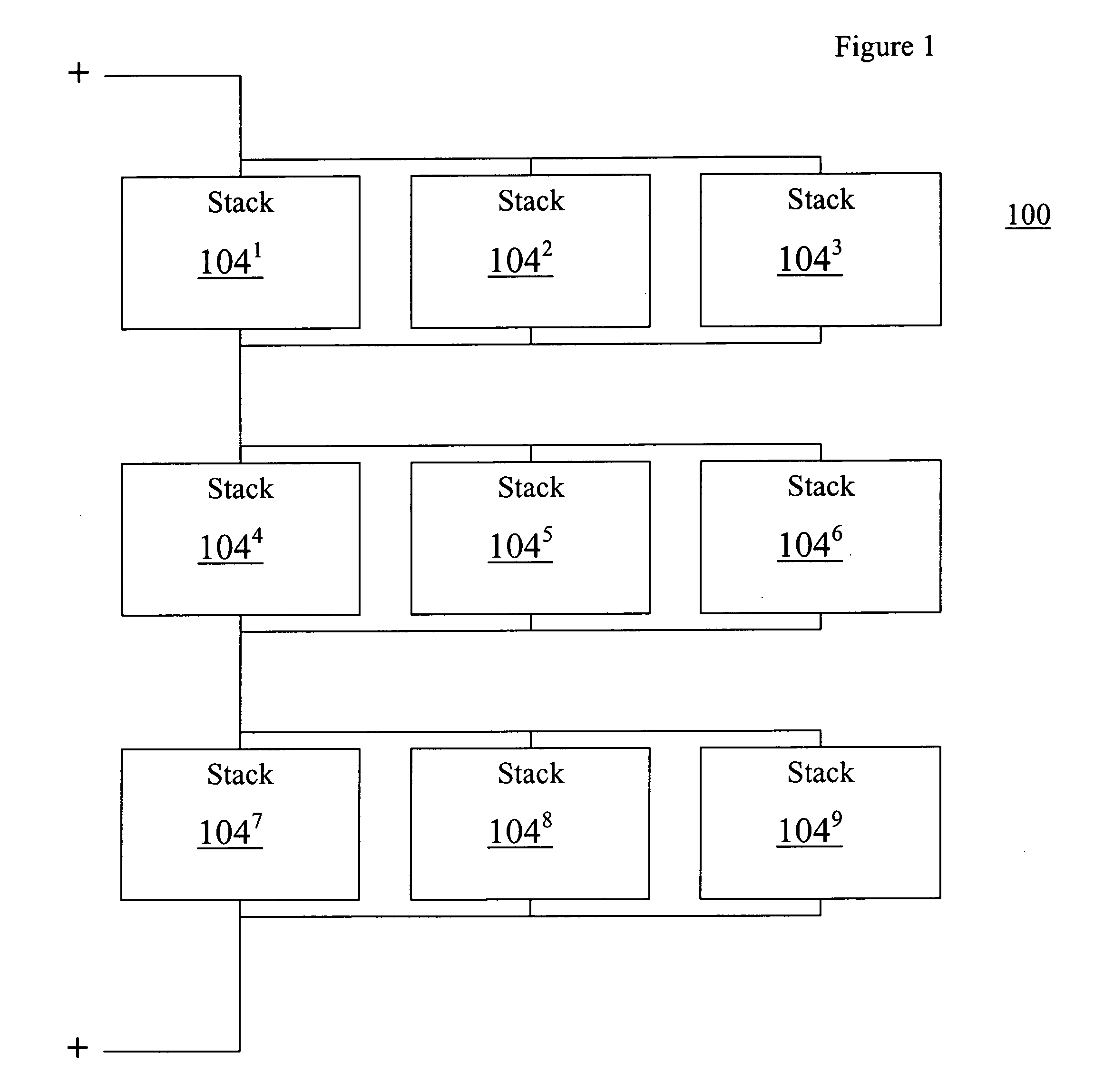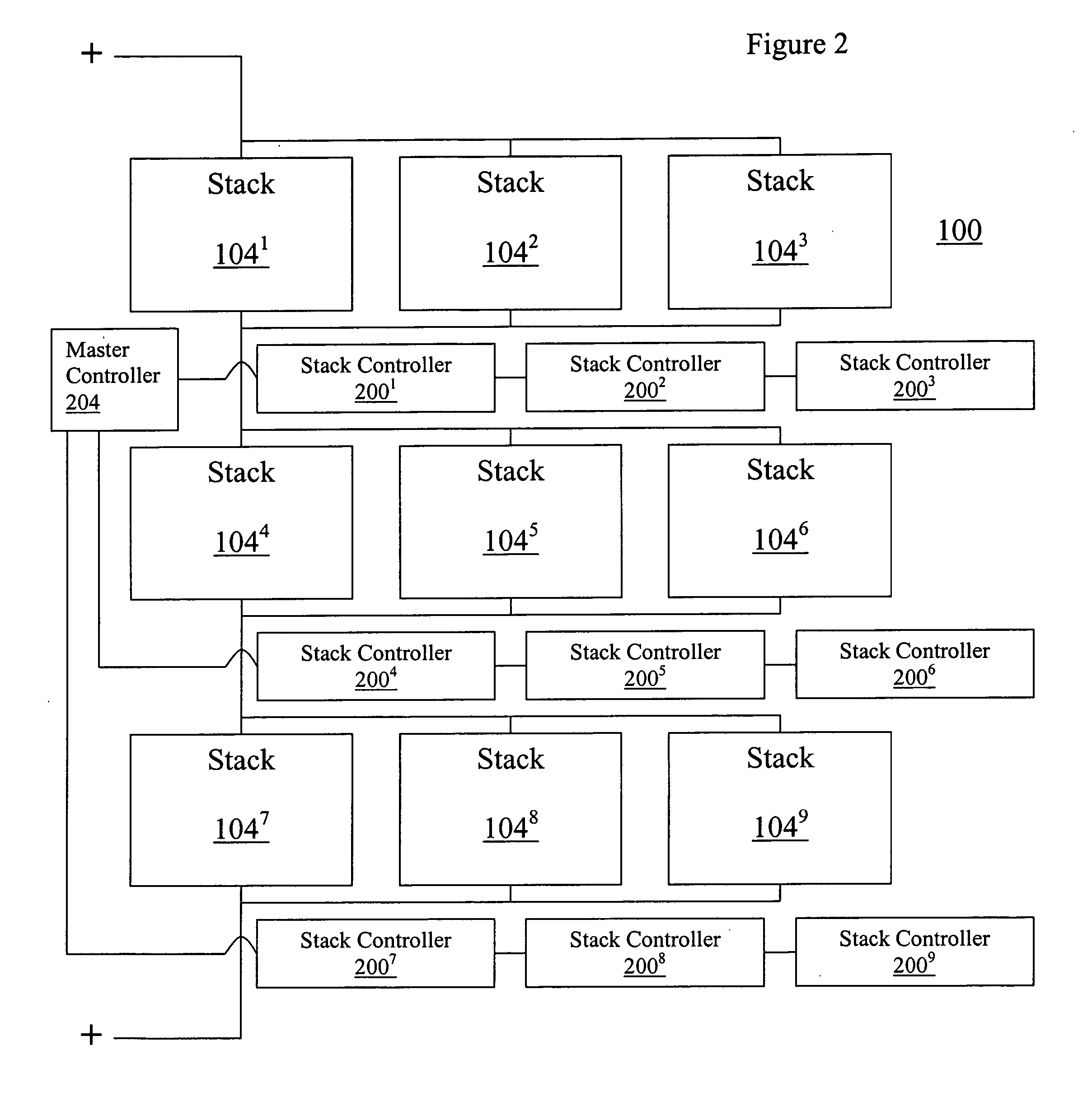Systems and methods for selective cell and/or stack control in a flowing electrolyte battery
a technology of selective cell and/or stack control, applied in the direction of cell components, process and machine control, instruments, etc., can solve the problems of power users, costing the industry as much as $400 billion a year in power disturbances, and millions of dollars in loss for businesses, so as to increase the flexibility of cell stacks, and reduce the risk of uneven cell plating
- Summary
- Abstract
- Description
- Claims
- Application Information
AI Technical Summary
Benefits of technology
Problems solved by technology
Method used
Image
Examples
Embodiment Construction
[0044] As discussed above in summary, the invention addresses the deficiencies in the prior art by providing, in various embodiments, improved, methods, systems and features for controlling, monitoring, charging and / or discharging (collectively “controlling”) flowing electrolyte batteries. According to some illustrative embodiments, the invention addresses the deficiencies in the prior art by providing methods, systems and features for controlling individual stacks of battery cells in a flowing electrolyte battery. In other illustrative embodiments, the invention provides methods, systems and features for controlling individual battery cells in a flowing electrolyte battery. In other illustrative embodiments, stack controllers and sensors interconnected with individual battery stacks and / or cells provide detection of a fault conditions, and in response to detecting such fault conditions, alter one or more charging conditions of individual battery stacks and / or cells. If necessary, a...
PUM
| Property | Measurement | Unit |
|---|---|---|
| time | aaaaa | aaaaa |
| charging current | aaaaa | aaaaa |
| charging current | aaaaa | aaaaa |
Abstract
Description
Claims
Application Information
 Login to View More
Login to View More - R&D
- Intellectual Property
- Life Sciences
- Materials
- Tech Scout
- Unparalleled Data Quality
- Higher Quality Content
- 60% Fewer Hallucinations
Browse by: Latest US Patents, China's latest patents, Technical Efficacy Thesaurus, Application Domain, Technology Topic, Popular Technical Reports.
© 2025 PatSnap. All rights reserved.Legal|Privacy policy|Modern Slavery Act Transparency Statement|Sitemap|About US| Contact US: help@patsnap.com



